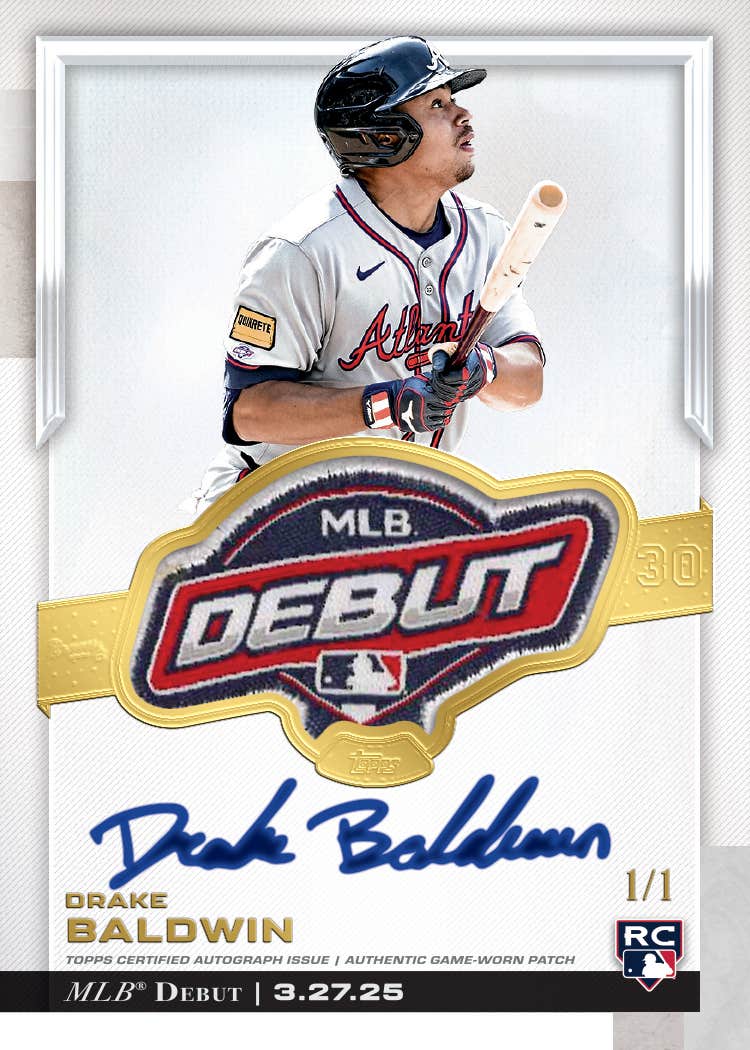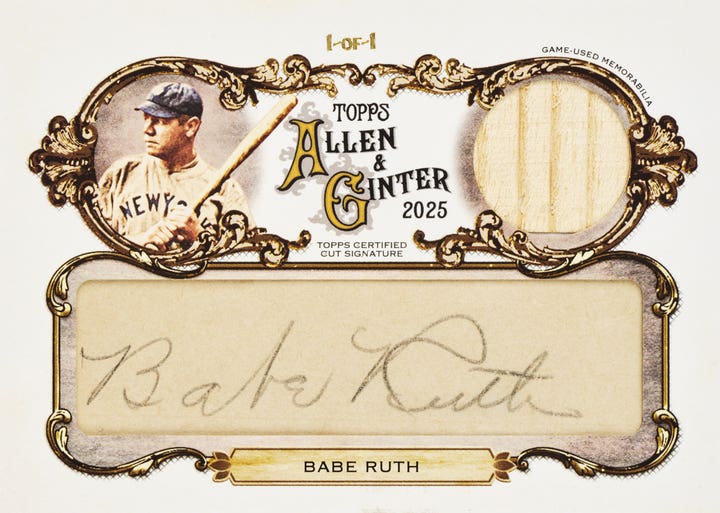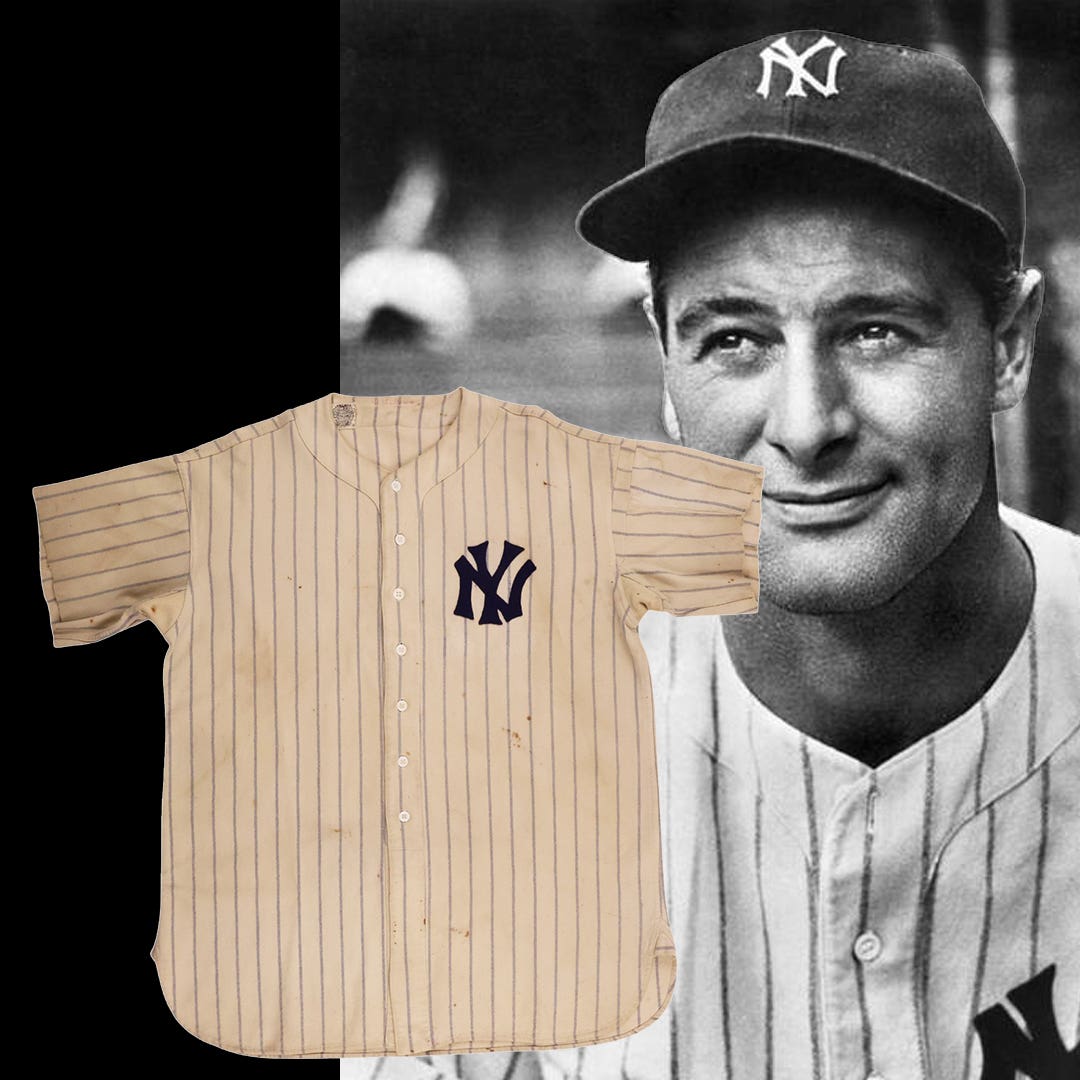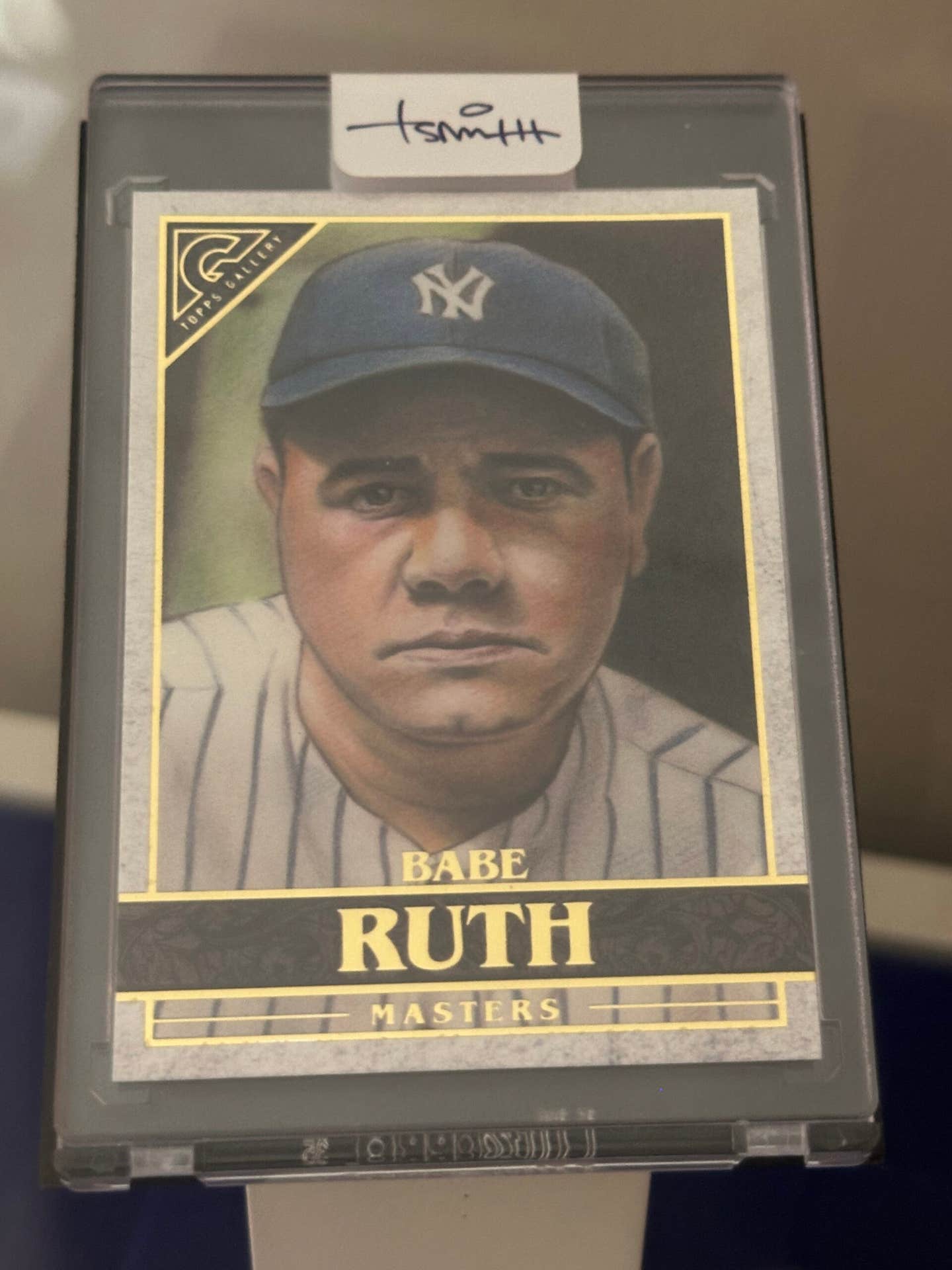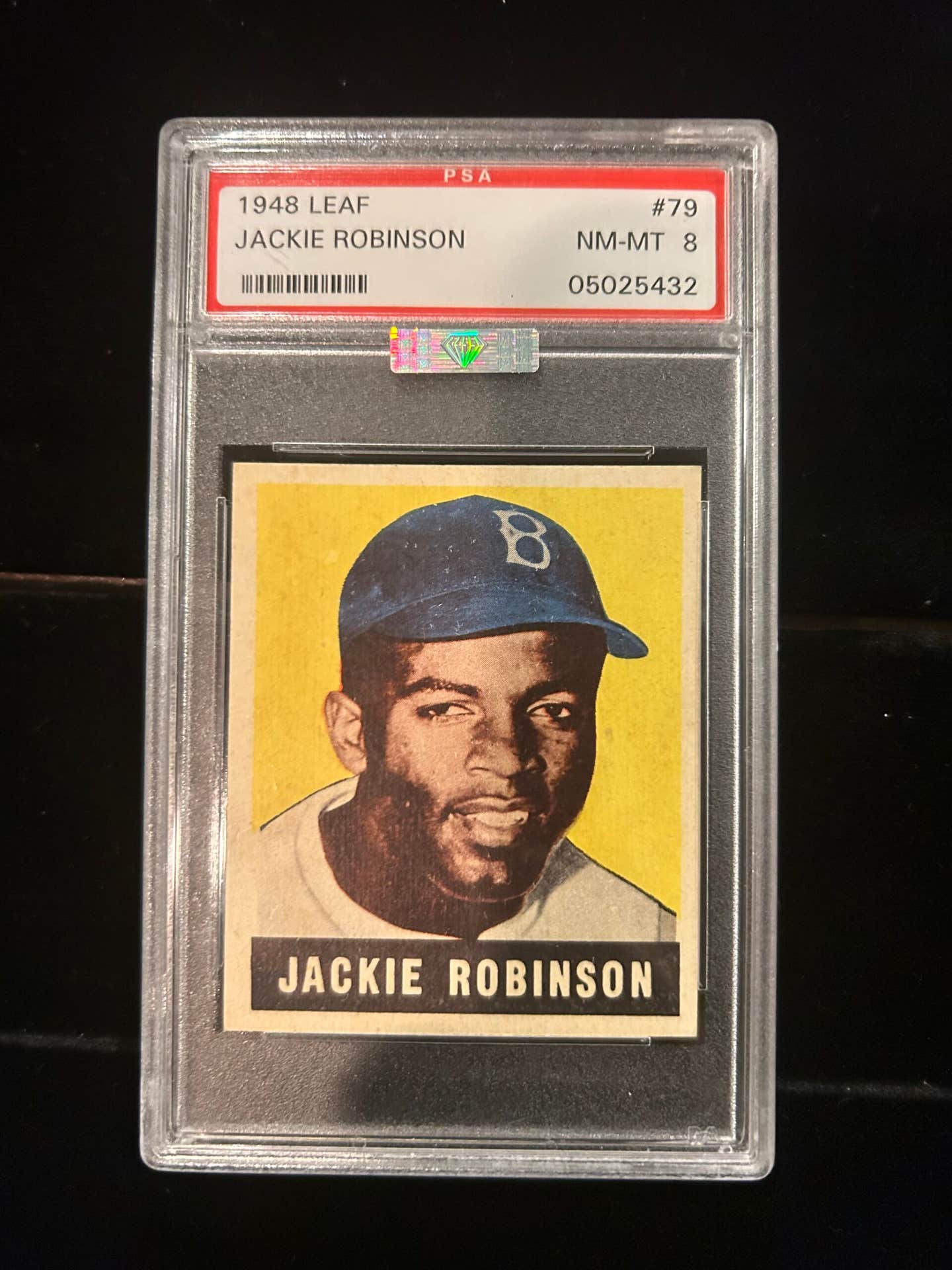Wilt Chamberlain
Doug McWilliams: The Man With the Camera – You’ve Seen His Work
By George Vrechek
In the era before digital cameras and smartphones, you took photographs by inserting a roll of film into a camera, advancing the film, setting up a flash, adjusting the f-stops, identifying the film speed, setting the shutter speed, focusing the lens, adjusting the exposure, pushing a button, rewinding the film, sending the undeveloped film to a photo lab and then waiting for the results to be printed on photographic paper a few days later. Seriously.
Can you believe how crazy that was?
Yes, eons ago (about 15 years ago), that was your only choice. For a young collector growing up before the digital age, it was unlikely you had a camera at all. If you did, you were likely too thrifty to spend your hard-earned money on film and developing, when you could blow it on baseball cards and bubble gum. Even if you had a camera and film, you weren’t likely to take it to a baseball game to get photos from the stands of far-away players on the field. It never even occurred to many people. It occurred to a young Doug McWilliams, however, and it resulted in a life-long involvement in photography and baseball.
McWilliams brings his camera along
McWilliams was born in 1937 in Oakland, Calif. By 1948, he and his neighbor (hobby veteran) Dick Dobbins were collecting baseball cards and attending games, which meant Pacific Coast League games involving the Oakland or San Francisco teams, usually at Oaks Park in Emeryville. McWilliams had admired photographs taken by Sport magazine’s Ozzie Sweet and started to fancy himself as a future sports photographer. When Remar Baking Co. (Sunbeam Bread) stopped issuing cards of Oakland Oaks after the 1950 season, McWilliams reasoned he could make his own cards out of photographs taken at a game. He brought his camera to the games and started shooting.
When asked about that first camera, McWilliams recalled, “My father gave it to me. He was an advanced photo buff. It was a little folding Kodak camera. You pulled down a front panel, and then slid out a bellows with a lens attached to the front. My next was a better version of the same type of camera, which I used for the next four years, called a Kodak Monitor.”
College, family and work
In 1955, McWilliams was majoring in journalism at the University of Kansas but gravitated to his early avocation of photographic journalism. After two years he transferred to the Brooks Institute School of Photography in Santa Barbara and received a diploma in commercial illustration in 1960. He saw the photos featured in Sports Illustrated at the time and imagined doing something like that. It was first necessary to serve in the military, get married, have two children and pay some bills. His “real” job was as an industrial/scientific photographer for the Atomic Energy Commission at the University of California’s Lawrence Berkeley Laboratory, a career that spanned 31 years. He had to make scientific equipment and nuts and bolts look good, a challenging task he recalls.
Collected from hobby pioneers for dimes
Unlike many of us, McWilliams retained his interest in card collecting after high school; he kept collecting and contacted many early collectors and dealers. For example, in 1957, he bought a complete Topps 1957 baseball set from the Card Collectors Company run by Woody Gelman’s father-in-law, Sam Rosen. The price of $7.50 for the set proved to be a good investment. Other earlier hobbyists who McWilliams dealt with included John D. Wagner, Bob Solon, Lew Lipset and George Tinker.
McWilliams moved into collecting tobacco cards. He bought T205s and T206s from Wirt Gammon, sports editor of the Chattanooga Times, who was an early advertiser in hobby publications. McWilliams’ approach was to pay 10 cents for tobacco cards. Fortunately in those days, there were plenty available at that price. (Mathematically, this would be the equivalent of buying a 1965 Topps card for 80 cents today – not a complete give-away.) Occasionally, he would splurge on a 50-cent card. McWilliams eventually acquired the tougher cards (minus Wagner, Magie and Plank) at prices beyond 50 cents, but miniscule in terms of today’s prices. He remembered Hal Chase (white hat) with the Yankees as being one of the tough cards he acquired. Tobacco sets, Play Balls, Goudeys, Topps, Bowmans, Mother’s Cookies and other sets piled up. McWilliams was listed in Irv Lerner’s 1970 book, Who’s Who in Card Collecting.
McWilliams as a mentor
Long-time collector/dealer Mark Macrae has known McWilliams for many years. Macrae commented, “He’s been in the hobby over 65 years, well before the formal hobby existed, and he still enjoys it. The Bay Area was a great place to collect in the 1970s. Numerous advanced collectors, including Doug, were very helpful to younger collectors like me. They would share information, warn us of frauds and fraudsters and were generous in their trades. Our common interests have kept us close over the years. We have attended numerous games together, done road trips (Seattle to Southern California) and traded each other material to improve our respective collections. I’ve worked with Doug on several displays, some of which require 20-25 hours to set up (not counting dozens to hundreds of hours to select the right items). These displays have been at ballparks, museums, libraries and shows.”
Photo Day turning point
McWilliams always enjoyed taking his own photos of baseball players; he would bring his camera along to minor league games. Not long after the A’s moved to Oakland, a significant opportunity arose for McWilliams. In 1969, the A’s held a “Picture Day” for fans, inviting them to bring their cameras and take photos of the players. McWilliams made sure he got to that event. He enjoyed the experience so much that he continued coming to the park to photograph players from the stands.
Some of the A’s he had photographed while they were in the minors. One of those players was Jim “Mudcat” Grant, who recognized McWilliams with his relatively fancy camera. McWilliams had photographed Grant 13 years earlier at a minor league game. In 1970, Grant was rooming with a 19-year-old rookie who would wind up being instrumental in McWilliams’ career. By the end of 1970, the rookie had a lifetime record of 3-1. McWilliams even did some photos for the rookie that he could send back to his family in Louisiana.
Grant was traded by the A’s to the Pirates in late 1970, but he returned to the A’s in August 1971. When he returned, the A’s told him to have new PR pictures done for them. Grant told the front office that he wanted McWilliams to do the photos. McWilliams met with the front office people and took Grant’s photos.
The rookie needed photos
Grant was not the only one who needed photos. Grant’s young roommate was now having a pretty good year, was in need of some photos and he also contacted McWilliams. The rookie was Vida Blue, who was having an unbelievable season, winning 24 and losing eight, with a 1.82 ERA and 301 strikeouts in 312 innings. He won the Cy Young Award, the MVP, pitched his team into the playoffs and appeared on the cover of Time magazine with the caption “New Zip in the Old Game.” Blue went on to a 17-year big league career.
Yes, Blue needed some photos. He was getting more than 100 requests per day. McWilliams told him that it would be more cost-effective for the quantities involved, if he had postcards produced rather than photos. McWilliams took care of the photography and provided Blue with 16,000 postcards, which included McWilliams’ name and address. The postcards went all over the country. McWilliams recalled, “Things changed for me after that.” It had been hard to get in the door as a sports photographer without the credentials of being “published.” According to McWilliams, “It was the old merry-go-round of: You can’t shoot if you don’t publish, and I can’t publish if I can’t shoot!” The Vida Blue postcard opened the door for McWilliams.
A second connection
Since McWilliams was contacting early hobbyists, he had gotten to know card collector Bill Haber. Haber also happened to be working at Topps putting together the facts and figures used on player cards. Haber took one of the Vida Blue postcards and showed it to Sy Berger of Topps. Berger liked what he saw and gave McWilliams an opportunity to work for Topps photographing players in spring training in Arizona’s Cactus League in 1972. McWilliams’ audition went very well; he continued with Topps for the next 23 years.
McWilliams, a natural collector, saved the letter he received from Berger in 1973, advising who it might concern that McWilliams was at spring training on behalf of Topps to photograph the A’s, Angels, Cubs, Indians, Brewers, Padres and Giants. He met Berger twice in Arizona. For the first 10 years he was the exclusive photographer for Topps at spring training in Arizona. He was also the only baseball card photographer there for many years, since Topps was the only major card issuer until 1981.
Mickey Palmer
McWilliams was a contemporary of former Topps photographer Mickey Palmer, one of two who covered Florida spring training. The photographers worked as independent contractors for Sy Berger, Phil Carter, Butch Jacobs and Bill Haber at Topps. Palmer knew Berger quite well. He has continued as a sports photographer and has shot every Super Bowl game. He co-authored a book, with Lou Sahadi, The Complete Book of Sports Photography.
Topps photography
McWilliams needed to remain organized and creative as he interacted with players, coaches and managers each year. On some days he would photograph an entire spring training squad of as many as 100 team members. Topps wanted six shots of each player in a variety of poses. He would take shots from distances of 5, 10 and 15 feet. Matching players’ photos and their names was an important part of the business, as was working quickly and efficiently.
When McWilliams photographed players at games, Topps wanted him to use slower speed film to get the best color, but slow film didn’t work very well with high-speed action. Topps directed him to take 15 rolls of 36 exposure film at each game. With digital cameras today, you get an instant image of photos you have just taken. If there is a distracting item in the background, or if the player shuts his eyes, you can identify the problem immediately. With the traditional film cameras, the photographer had to carefully frame his picture in advance. McWilliams looked through his view finder to avoid problems, which included burnt out, scrubby grass, fences and other distractions.
Lighting and backlighting
At times, he would backlight the player using the sun and then light the front of the player with a strobe flash for a dramatic look.
“Some photographers could not figure it out, back then,” McWilliams felt. “My advantage was my camera had a between-the-lens ‘leaf’ shutter that synched the shutter with the flash no matter what the speed I was shooting.”
Two of his favorite photos, 1975 Topps Herb Washington and 1989 Topps Harold Reynolds, were shot with this technique.
Looking at McWilliams’ work and some of the shadowy or fuzzy images Topps had to use for some other players, you can tell the difference. He wanted the players to look good, and he wanted to emulate what he had seen as a kid in the work of Ozzie Sweet.
McWilliams postcards
McWilliams realized no photographer was working directly with the A’s players, and he filled the void by taking care of their own fan response and personal appearance needs like he had for Vida Blue. The resulting postcards, which he produced for players starting in 1970, have been listed in the Standard Catalog of Vintage Baseball Cards. Just in the 1970s, he produced 122 cards which could only be obtained from the players; he did not sell cards to the public.
McWilliams remembered that A’s owner Charlie Finley took notice that he was photographing players in A’s (trademarked) uniforms, and the cards were circulating around the country. However, Finley calculated that he was better off staying out of the process since he saved money by not having to produce and pay for cards for the players.
In 1987, Mothers’ Cookies used 28 of the McWilliams postcard images to create a set of all the A’s All-Stars from their years in Oakland. McWilliams work also appeared in many other issues such as Upper Deck, Fleer, Ted Williams, Rite-Aid, Woolworths, Gardner Bread, Hostess Cakes and Panini.
Other sports
Topps hired McWilliams to photograph players for their other sport issues in football and basketball. While McWilliams worked for a few years doing West Coast teams, there were differences in how he could interact with the athletes. In football, he was working with long lenses from a chaotic, sometimes dangerous sideline, trying to get action photos or candid poses of players who were not there for a photo session.
Photographers have to station themselves outside the team box, which extends to each 30-yard line, and there is considerable jockeying for position within the available remaining space. He even worked previously for Fleer doing some of their football cards in the early 1960s when the Oakland Raiders were briefly known as the Oakland Señors.
It was better with the basketball players, because he was able to get them to pose at practices or training camps. He took photos of many of the San Francisco Warriors in the early 1970s. He recalls Topps paid him $100 plus expenses for a session. However, McWilliams decided to concentrate on baseball.
The players
McWilliams has fond memories of dealing with many of the players. He recalled in his own words:
• Vida Blue was a favorite. I photographed his wedding on the mound at Candlestick Park. He included me and my wife in all the showers, parties and festivities that led up to the main event. He visited my son when he was ill. He went out of his way to tell other players on other teams that I was the one to see to do their personal pictures.
• Reggie Jackson was a long-time user of my work, and a good subject for my camera. Always friendly with me and wonderful to get to know.
• Willie McCovey had me cover his retirement, associated parties and the celebration at Candlestick. I made a special large photo album of the whole weekend for him.
• Bill Caudill challenged me creatively; each year he asked me to do something different for him – no matter the cost. That was really fun and challenging to work for him.
• Dick Williams taught me more than anyone else about the nuances of baseball. It was Baseball 101 just standing next to him during a game while I was shooting. He went out of his way to help me with the teams he managed in Arizona (there were four of them over the 23 years I was there for Topps) by coming up to me and asking me if I “had them all” yet? And then calling the players I needed in – one by one. Often his teams were completed by 11 a.m., which was very unusual.
• Jerry Reuss was a friendly guy, who later developed a keen eye for photography. Many of the players liked to talk photography, look through your camera and ask questions. He has a wonderful website of his photography.
• Ted Kubiak, who I shot with many of his teams, has remained a good friend for more than 45 years. He was very nice to my children when they were younger – paid attention to them when they came to the ballpark and made them (and me) feel special.
• Someone I have known as a friend since 1970 is Ray Fosse, with all of his teams. Later he has been a better friend through his work at my home ballpark in Oakland as one of the voices of the Oakland A’s radio and TV broadcasters. He always has time to stop and talk a bit when I see him.
• Basically, I discovered that the players, managers and coaches were just like you and me, and even though they had special talents, they were down to earth folks. We all have a special talent – some are just more visible to the public than others.
Goofs
Given the myriad of photos and the difficulty of keeping the names with the photos, McWilliams remembers one mix-up in the card production process. In 1980, McWilliams took photos of Oakland A’s players Steve McCatty and Jeff Cox. Somehow McCatty’s picture was used for Jeff Cox’s one and only 1981 Topps rookie card. McWilliams felt bad about the error and created a home-made card for Cox with the correct photo. Cox went on to be a long-time major league coach.
Hall of Fame negatives
It didn’t take too many years of producing images until McWilliams started to think about the historical significance of his work and how best to preserve it. Rather than selling his non-Topps work product and seeing his work reproduced, McWilliams thought the best place for his work would be the Baseball Hall of Fame. It is significant that the Hall of Fame had the same view and accepted the donation, which filled a gap in their archives.
In 2010, McWilliams took 20,000 negatives and oversized prints, including 600 images of Hall of Famers, to Cooperstown. He didn’t want to entrust a shipper to deliver his life’s work and felt more comfortable escorting it himself, filling up his vehicle and driving cross-country. The Hall of Fame estimated that McWilliams had photographed more than 1,400 major league players, which comprised about 8 percent of all who had ever played in the majors.
Being a sports photographer
In the process of working for Topps, McWilliams reflected that he got to be “around some of the top sports writers and photographers for major newspapers such as the San Francisco Examiner or New York Times.” He photographed and remembered players year after year and saw them progress in their careers. As a student at the University of Kansas, he photographed a promising basketball player – Wilt Chamberlain. He photographed Reggie Jackson, Nolan Ryan, Hank Aaron, Joe Morgan, Robin Yount, Rod Carew, Tony Gwynn, other Hall of Famers and other players who were “just like you and me.” Not a bad side job.
McWilliams has disposed of most of his card collection. The photo archive at the Hall of Fame has accepted his life’s work of baseball photography, but he is still a photographer and collector at heart and will take photos when he attends games. He can’t help it.
George Vrechek is a regular contributor to SCD and can be contacted at vrechek@ameritech.net.




